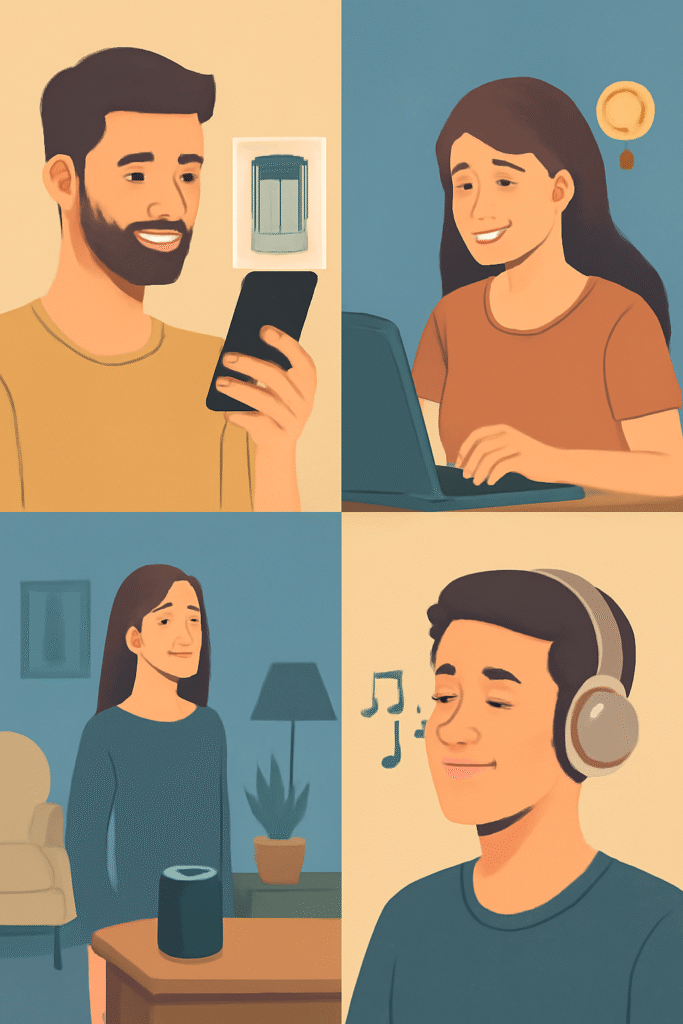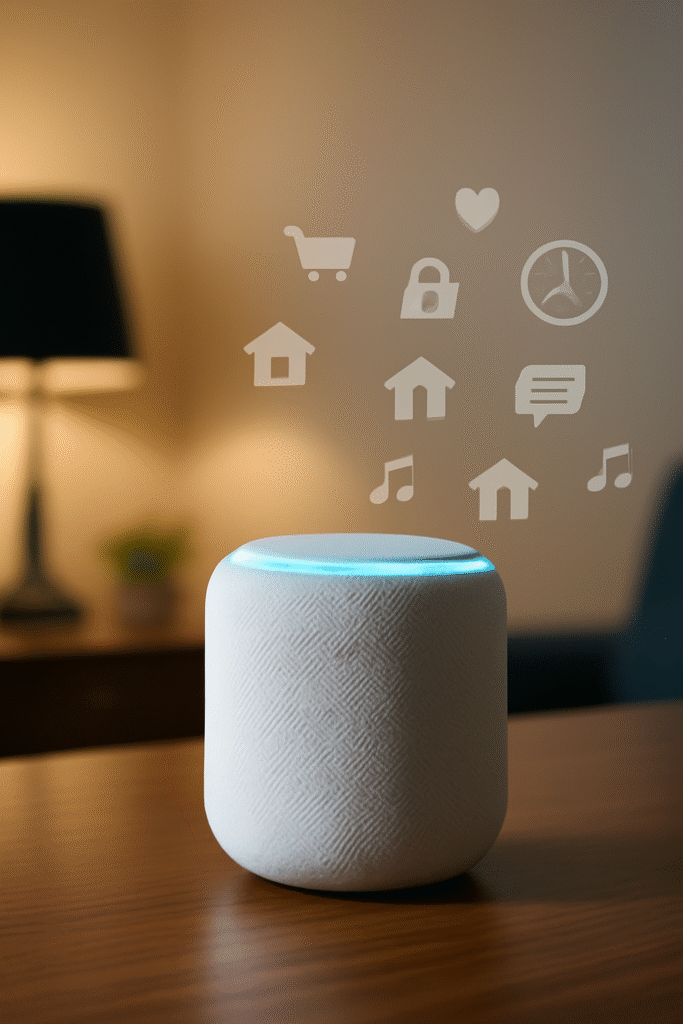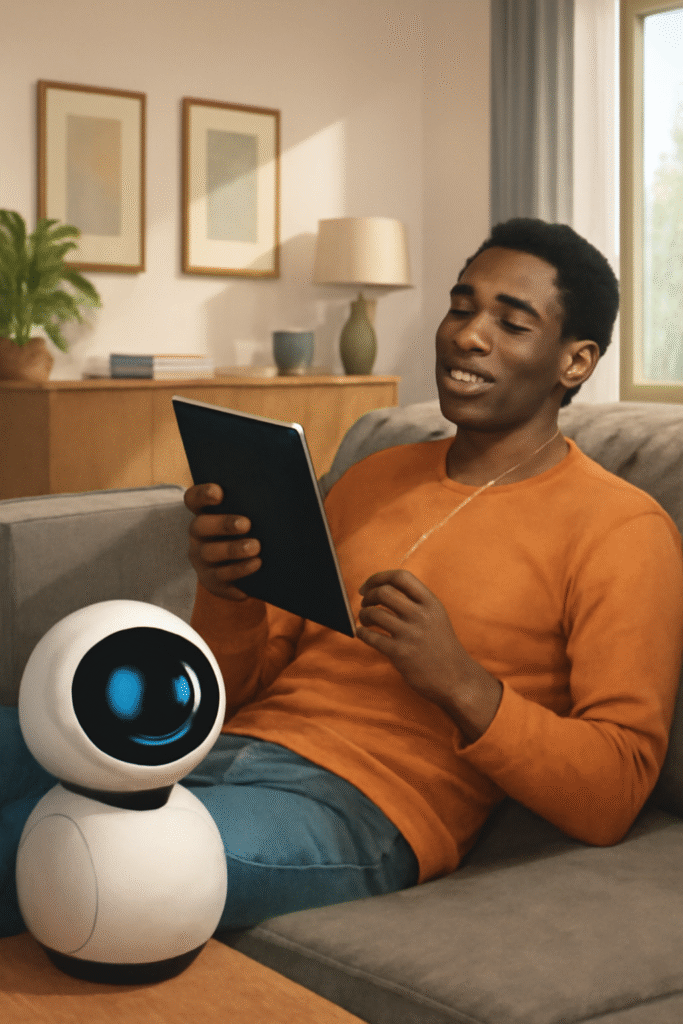A IA mais poderosa não é a que aparece — é a que funciona sem você perceber.
Entramos em uma era em que a inteligência artificial opera como a eletricidade — invisível, porém essencial para o funcionamento diário. Ao contrário dos robôs distópicos do cinema, a IA atual se manifesta como melhorias sutis em ferramentas comuns, criando o que os pesquisadores chamam de “inteligência ambiental”. Para profissionais, pais e aposentados, essas inovações oferecem melhorias tangíveis na qualidade de vida que valem a pena compreender.
- Autenticação Biométrica: Além das Senhas
Dispositivos contemporâneos agora utilizam mapeamento de profundidade 3D (via pontos infravermelhos ou lasers) para criar modelos faciais com precisão de 0,01 mm. Isso vai além da fotografia — o sistema True Depth do seu iPhone projeta e analisa 30.000 pontos invisíveis para diferenciá-lo de gêmeos ou máscaras.
Aprimoramento de Segurança: Combine o reconhecimento facial com a biometria comportamental (ritmo de digitação, marcha) para proteção multifatorial.
- Suporte à escrita sensível ao contexto
Os editores de IA modernos não apenas corrigem a gramática, como também compreendem a intenção:
Documentos jurídicos: Sugerem terminologia precisa
Escrita criativa: Oferecem ajustes de tom (formal → coloquial)
Comentários de código: Geram automaticamente explicações para funções complexas
Exemplo: O recurso “Ajude-me a escrever” do Google Docs pode redigir resumos completos de reuniões a partir de tópicos.
- Assistentes de voz evoluíram: O gerente doméstico silencioso

Assistentes de nova geração demonstram inteligência proativa:
Pedidos preditivos: “Seu detergente para roupas está acabando — deseja refazer o pedido?”
Integrações com saúde: “Seu padrão de sono indica estresse — deseja ouvir uma meditação?”
Modos de privacidade: silenciamento automático ao detectar conversas privadas
Tecnologia emergente: o robô Billie, da Samsung, circula pelas casas usando câmeras e IA para auxiliar pessoas idosas.
- Tradução sem fronteiras
Avanços em tradução neural por máquina agora conseguem preservar:
Nuances culturais (honoríficos japoneses → equivalentes adequados em inglês)
Jargões profissionais (terminologia médica e jurídica com precisão de até 92%)
Tradução em tempo real de linguagem de sinais por meio de óculos de realidade aumentada
Limitação: ainda há dificuldades com dialetos regionais — recomenda-se revisão humana em contratos.
- Curadoria inteligente de mídia
Seus dispositivos agora contextualizam memórias:
Criam vídeos “Melhores de 2024” com trilhas musicais emocionalmente envolventes
Detectam fotos duplicadas entre diferentes serviços de nuvem
Alertam sobre conteúdos sensíveis antes do compartilhamento (“Esta imagem mostra um cartão de crédito”)
Dica profissional: use a opção “Ocultar semelhantes” para organizar fotos de viagem quase idênticas.
- Algoritmos de comércio ético
Varejistas pioneiros agora oferecem:
Auditorias de viés: explicando por que determinados produtos foram recomendados
Descoberta intencional: botões como “Explore fora do seu estilo habitual”
Estimativas de pegada de carbono junto às compras
Vitória da transparência: a IA da Patagônia explica os impactos da cadeia de suprimentos de cada item.

Wearables e IA: A Saúde Sendo Monitorada Antes dos Sintomas
Os avanços mais recentes incluem:
Detecção precoce de Parkinson por meio de microtremores na digitação
Previsão de glicose para diabéticos usando sensores não invasivos
Alertas de postura com feedback háptico para quem trabalha remotamente
Validação clínica: estetoscópios com IA aprovados pela FDA já detectam sopros cardíacos com 87% de precisão.
- Conteúdo Curado que Evolui com Você
As plataformas de streaming agora acompanham:
Métricas de atenção: quais cenas você reassiste
Correlação com humor: gêneros preferidos em momentos de estresse
Gostos compartilhados: perfis de familiares influenciam as recomendações
Nota de privacidade: é possível desativar o “monitoramento de engajamento” nas configurações da conta.
- Sistemas de Mobilidade Preditiva
A IA em escala urbana agora:
Ajusta semáforos de forma preventiva antes que congestionamentos se formem
Redireciona ônibus com base na densidade de passageiros em tempo real
Prevê disponibilidade de vagas usando reconhecimento de placas
Impacto urbano: Lisboa reduziu o congestionamento em 32% com esses sistemas.
- Inteligência Colaborativa no Trabalho
O novo paradigma não é a IA substituir pessoas, mas potencializar equipes:
Síntese de reuniões: destaque automático de decisões e tarefas
Copilotos de design: transformam esboços simples em modelos CAD
Mediação de conflitos: análise do tom de e-mails para evitar mal-entendidos
Sugestão de ferramenta: o Microsoft Copilot se integra de forma contextual aos aplicativos do Office.
Navegando na Parceria Humano-IA

Para usar a IA de forma responsável
Para indivíduos
Realize auditorias trimestrais de IA nas permissões dos seus dispositivos
Crie santuários livres de tecnologia (mesa de jantar, quarto)
Verifique resultados críticos da IA usando a regra das 3 fontes
Para a sociedade
Defenda leis de transparência algorítmica
Apoie programas de alfabetização em IA para todas as idades
Participe do design ético da IA por meio de feedback dos usuários
Como observa Sherry Turkle, do MIT:
“A tecnologia mais poderosa é aquela que melhora a vida sem exigir atenção constante.”
Exercícios de reflexão
Identifique uma interação com IA que você considera automática — como ela realmente funciona?
Qual valor pessoal nunca deveria ser delegado a algoritmos?
Desenhe sua rotina diária ideal: potencializada por IA, mas centrada no ser humano.
